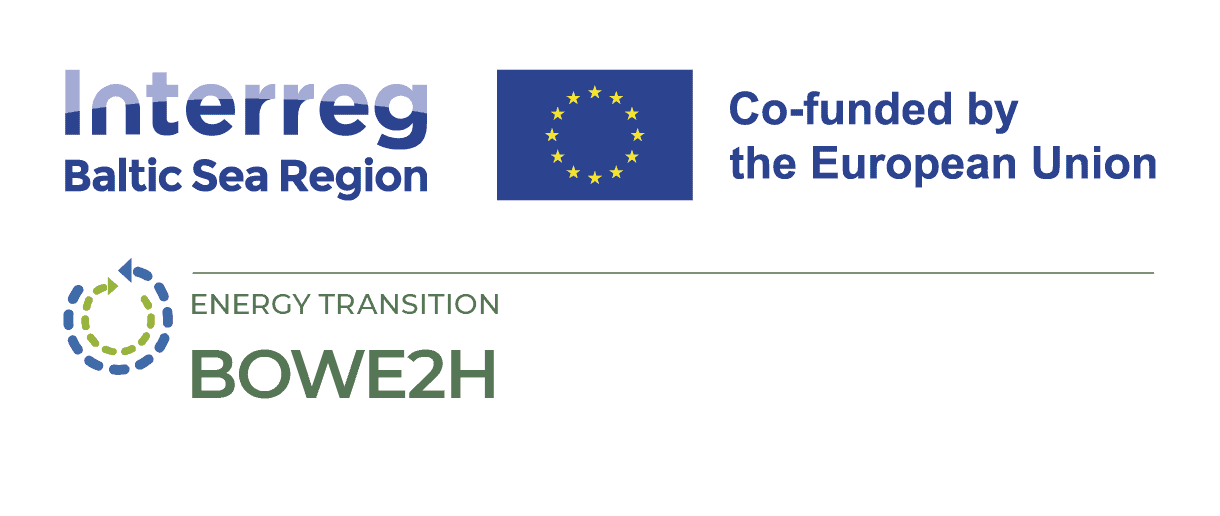Offshore-wind power and hydrogen in Sweden and Denmark
Project: BOWE2H
Physical Meeting
17. April 2024
09:15 - 15:30 (CEST)

The grave threat to global ambitions to keep global temperature rises below 1.5 degrees Celsius above pre-industrial levels means the energy transition must be accelerated whenever possible. While it is generally recognised that the best way to do this is wholesale electrification accompanied with a massive increase in renewable-power generation capacity, this still leaves some unresolved issues: clean renewable-power sources (wind and solar) are intermittent, and there are sectors, such as air transport or steelmaking, which are difficult or impossible to electrify. Moreover, renewable power is often produced far away from industrial or population centres, and existing power-transmission infrastructure has not been built with sufficient capacity to move such high volumes of electricity across such great distances.
Hydrogen is generally recognised as the best – or perhaps only – response to this conundrum, since it can be used both to store surplus energy and directly as fuel for transport or high-intensity industrial processes. If hydrogen-production plants are established near renewable-energy-generation facilities, they can convert excess power to hydrogen, which can be easier to transport or use in nearby industrial plants than pure electricity. The Baltic Sea, which has vast potential for wind-power generation, not least offshore, is a prime candidate region for such a strategy.
The Baltic Sea is densely used and strategically important, especially given the current geopolitical situation and the ongoing threat from Russia. It also has a tradition of cross-border cooperation and transnational networks going back centuries, which has experienced a resurgence since the end of the Cold War. While governments in the Baltic Sea Region each have their own strategies for the expansion of offshore-wind power and hydrogen generation, they also understand that these are best deployed in coordination and cooperation with each other. This fact is reflected by the fact that the region has the highest number of cross-border offshore-wind farms in the world, and more are in the pipeline.
Baltic Offshore Wind Energy to Hydrogen (BOWE2H) aimed to create a transnational network and perspective to unite local governments, developers, grid experts, researchers, manufacturers, and policymakers. These stakeholders had access to regional knowledge, which they needed to share with counterparts from other countries to achieve the best results within countries and across borders.
BOWE2H’s stakeholder network hosted six regional expert events and aimed to co-creatively produce a Strategic Roadmap for Regional Offshore Wind and Hydrogen Development. The kick-off and final conferences were virtual, while four regional events (including co-creative workshops) were held in big upcoming markets for offshore wind in the Baltic Sea, specifically Poland, Lithuania, Sweden, and Germany.
The event network enhanced the capacity of stakeholders to act by providing them with an understanding of the necessary policy, grid, investment, and research framework for offshore-wind and hydrogen-project development, and by connecting them with other stakeholders to enhance communication, coordination, and cooperation. Upon completion, the Strategic Roadmap – built from a metastudy, interviews with expert stakeholders at the physical events, and results from the co-creative workshops – contained an infographic summary to be distributed to the project stakeholders and beyond.
The Interreg Baltic Sea Region programme was instrumental in making BOWE2H possible. The Interreg brand gave the project a high profile and bolstered interest from stakeholders and decision-makers at every level, from government agencies and universities to grid operators and the private sector. As such, support from the programme ensured the highest quality of input for BOWE2H’s results by bringing distinguished speakers and participants to the physical events and obtaining high-quality information from stakeholders to inform the Strategic Roadmap. This ensured the highest possible relevance and dissemination for the project and its outputs.
Project: BOWE2H
Physical Meeting
17. April 2024
09:15 - 15:30 (CEST)
Project: BOWE2H
Physical Meeting
25. January 2024
08:45 - 16:30 (EET)
Project: BOWE2H
Physical Meeting
29. September 2023
09:30 - 16:00 (CEST)
Project: BOWE2H
Physical Meeting
22. May 2023
13:00 - 18:00 (CEST)
Project: BOWE2H
Virtual Meeting
14. February 2023
09:00 - 12:00 (CET)